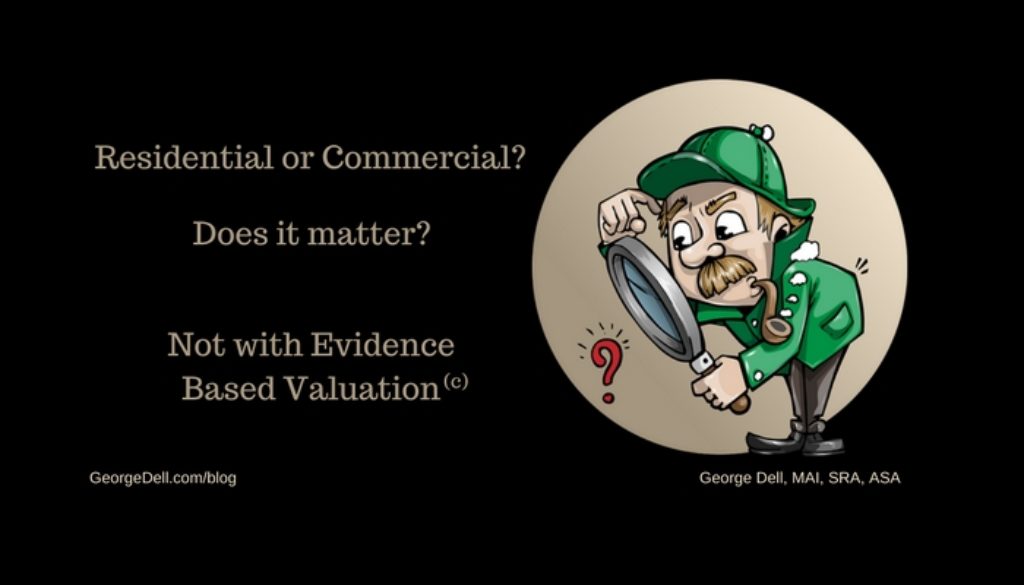For the Stats, Graphs, and Data Science1 class, we are often asked if the material is oriented to residential or commercial property.
The question itself assumes that the property type defines the logic of analysis. Data science is the science of data. The class itself is about methodology, technology, and cognitology. Whew!
The question about “residential or commercial” is always answered: The focus is about how to approach any asset evaluation problem, whether commercial, agricultural, special use, residential, personal property, business rights, or even partial or component interests.
The class is about the ‘new’ science of data. Why is it new? Because throughout history, the problem was a lack of data. The scarcity of data was solved in two basic ways: 1) you could take a random sample, and ‘test’ how well your random sample represents the population you want to study; 2) you collect whatever data you can, and make a non-mathematical argument that your data (e.g., your comps) are carefully chosen.
Traditional appraisal, developed mostly in the 1930’s is of the second type. It is based on a judgment sample, a convenience sample, or purposeful sampling. What traditional appraisal is not is random sampling for the data. Never was.
It does involve:
- Judgment sampling, applying appraiser experience and knowledge for the selection;
- Convenience, in the office files, or because of a personal connection;
- Purposeful sampling, where the analyst identifies data to best ‘support’ an opinion.
Purposeful sampling is probably the underlying notion of ‘picking comps,’ yet recognizes that convenience and good judgment play a part. This long-standing and valid method is and was the basis of value opinion, given sparse, scarce, or difficult data. Picking comps is a critical part of traditional valuation practice.
Today we have something better. It is called Evidence Based Valuation ©.
Evidence Based Valuation builds on a different foundation. It solves a different problem. It exalts a new opportunity for the valuation profession.
- The foundation is that of an objectively defined data set (of whatever size).
- The main problem to be solved is that of human understanding of the complete data set.
- The opportunity for individuals and the profession is that of new services and products.
Objective data selection is the start of a logical, analytical, algorithmic approach to valuation. New techniques, new tools, and new critical thinking are made possible.
We are compelled and required, by appraisal standards, to be objective in our opinion. But when the data analysis starts with a subjectively selected (and not-complete) data set – it is not possible to arrive at an objectively objective result. This leads to the following principle:
The Impossibility Theorem of Valuation:

May 25, 2019 @ 3:59 pm
Hi George,
I generally like your stuff, and I do have internet access to MLS, CoStar and other commercial data providers, however, I have a question regarding the residential or commercial issue.
Given that a primary difference between the two is the Income Approach, and that a key data point is the capitalization rate, and that estimation of a capitalization rate depends at least in part on a credible estimation of for example office, retail or industrial rent:
Then where do you find, or suggest finding actual office, retail or industrial lease comparables ?
Thanks, Peter
November 4, 2019 @ 9:02 pm
Peter, I apologize for missing your post till now!
I believe each area works differently. In San Diego we have a service which documents these. Also, you can make phone calls to owners of info in CoStar sales.
How that helps.
November 4, 2019 @ 10:09 pm
Hi George,
No worries and thanks for getting back to me – it wasn’t that urgent. I don’t find CoStar overwhelming, but now I’m curious about the Lease Comp Service in San Diego that you mention … is it CompStack or ?
Thanks, Peter